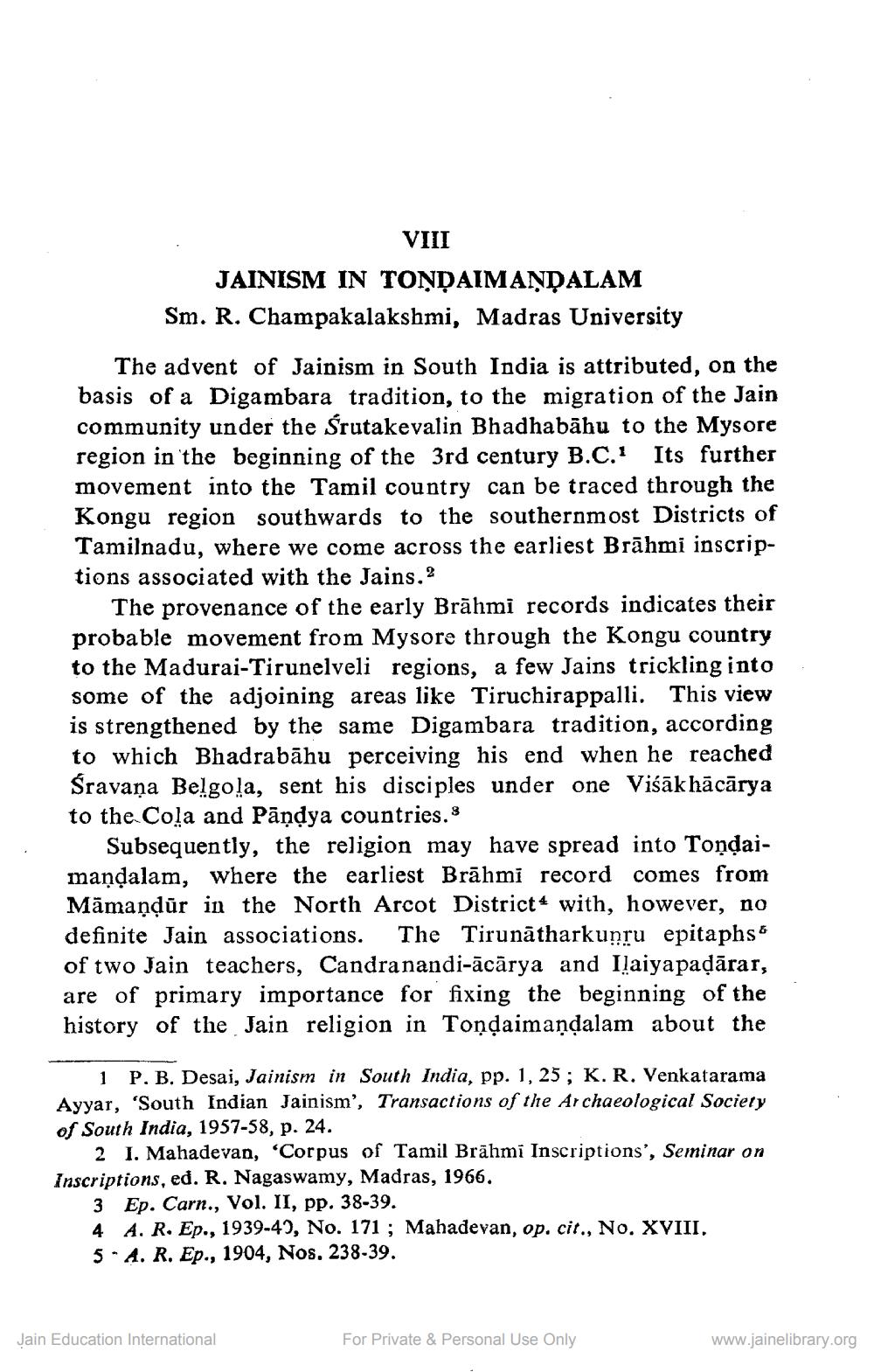________________
VIII
JAINISM IN TOŅDAIMAŅDALAM Sm. R. Champakalakshmi, Madras University
The advent of Jainism in South India is attributed, on the basis of a Digambara tradition, to the migration of the Jain community under the Šrutakevalin Bhadhabahu to the Mysore region in the beginning of the 3rd century B.C. Its further movement into the Tamil country can be traced through the Kongu region southwards to the southernmost Districts of Tamilnadu, where we come across the earliest Brāhmi inscriptions associated with the Jains.?
The provenance of the early Brāhmi records indicates their probable movement from Mysore through the Kongu country to the Madurai-Tirunelveli regions, a few Jains trickling into some of the adjoining areas like Tiruchirappalli. This view is strengthened by the same Digambara tradition, according to which Bhadrabāhu perceiving his end when he reached Sravana Belgola, sent his disciples under one Višākhācārya to the Cola and Pāņdya countries.
Subsequently, the religion may have spread into Tondaimandalam, where the earliest Brāhmi record comes from Māmaņdār in the North Arcot District 4 with, however, no definite Jain associations. The Tirunātharkunru epitaphs of two Jain teachers, Candranandi-ācārya and Ilaiyapaļārar, are of primary importance for fixing the beginning of the history of the Jain religion in Tondaimaņdalam about the
1 P. B. Desai, Jainism in South India, pp. 1, 25; K. R. Venkatarama Ayyar, 'South Indian Jainism', Transactions of the Archaeological Society of South India, 1957-58, p. 24.
2 I. Mahadevan, 'Corpus of Tamil Brāhmi Inscriptions', Seminar on Inscriptions, ed. R. Nagaswamy, Madras, 1966.
3 Ep. Carn., Vol. II, pp. 38-39. 4. A. R. Ep., 1939-40, No. 171 ; Mahadevan, op. cit., No. XVIII, 5 - A. R. Ep., 1904, Nos, 238-39.
Jain Education International
For Private & Personal Use Only
www.jainelibrary.org




